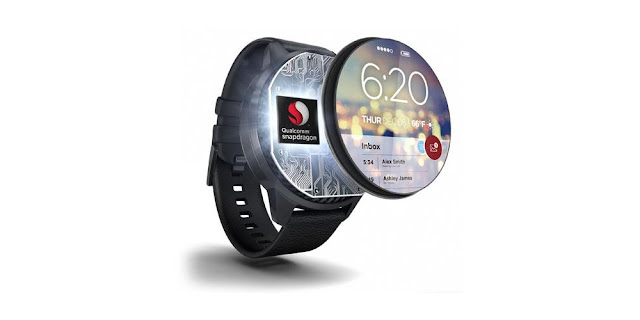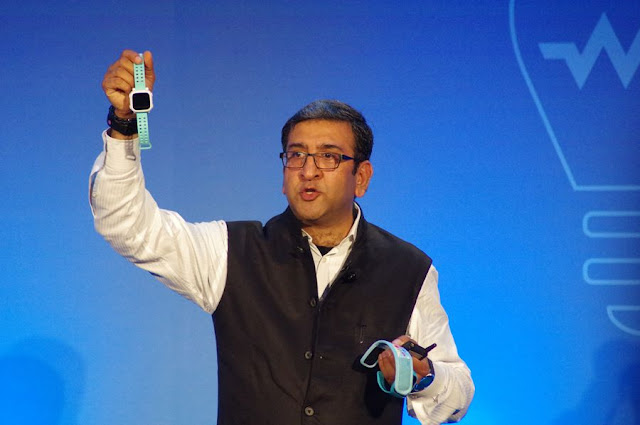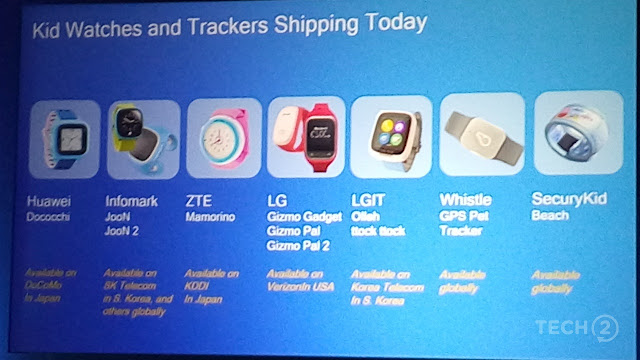Qualcomm has announced its latest processor for its Snapdragon Wear platform called the Snapdragon Wear 1100. Unlike the Snapdragon Wear 2100 that was shown off in February, which is meant for multi-purpose devices such as smartwatches, the Snapdragon Wear 1100 is targeted at performing specific functions.
Unlike the Wear 2100 SoC, the Wear 1100 SoC is more focused on simpler devices like fitness trackers. Apart from LTE, it also comes with support for WiFi and Bluetooth. Qualcomm has partnered with several companies like Aricent, Borqs, Infomark, and SurfaceInk providing reference software platforms in order to bring this new tech into the market.
The Snapdragon Wear 1100 SoC also brings slow power mode called Power Save Mode (PSM), a much needed in smartwatches today. Companies like Anda Technologies, inWatch and WeBandz announced plans to bring wearable products targeted for kids and elders using the Qualcomm chipsets alongside the reference platforms available.
Speaking at the keynote, Senior Director and Business Lead of Smart Wearables at Qualcomm, Pankaj Kedia spoke about the bright future of wearables and internet of things (IoT) in general. "We are truly excited about the wearable space by customer category, by OS, by product category," he said. Kedia concentrated on five key factors for the Snapdragon Wear 1100 platform. Small size, low power, smart sensing, always-on connectivity week long LTE standby, hardware based security and next-gen GPS. Snapdragon Wear 1100 is targeted to unleash the Kids smartwatch segment, he said.
The Snapdragon 1100 SoC joins the already existing Qualcomm portfolio available for wearables. Qualcomm has already introduced Snapdragon Wear 2100, CSR102x Bluetooth Smart 4.2 SoC, and Qualcomm SiRFStar location into the wearable market. The company claims that more than 100 wearable products are now available with processors from Qualcomm.
Qualcomm processors are synonymous with flagship smartphone with almost all OEMs across the globe. The IDC reports that wearable shipments increased by 171 percent last year. It grew from 28.8 million to 78.1 million units last year, and Qualcomm understandably wants to make the most of this acceleration.
The Snapdragon Wear 1100 measures 79 square mm, houses an ARM Cortex A7 processor, has a Cat 1 modem, supports Linux and RTOS and supports hardware level security. The chipset will start shipping on 31 May.
Apart from Qualcomm, Asus also unveiled a host of products at Computex. The company took the wraps off the Zenfone 3 (three variants), Zenbook 3, and the Asus Zenbo Household Robot with voice control.
Unlike the Wear 2100 SoC, the Wear 1100 SoC is more focused on simpler devices like fitness trackers. Apart from LTE, it also comes with support for WiFi and Bluetooth. Qualcomm has partnered with several companies like Aricent, Borqs, Infomark, and SurfaceInk providing reference software platforms in order to bring this new tech into the market.
The Snapdragon Wear 1100 SoC also brings slow power mode called Power Save Mode (PSM), a much needed in smartwatches today. Companies like Anda Technologies, inWatch and WeBandz announced plans to bring wearable products targeted for kids and elders using the Qualcomm chipsets alongside the reference platforms available.
Speaking at the keynote, Senior Director and Business Lead of Smart Wearables at Qualcomm, Pankaj Kedia spoke about the bright future of wearables and internet of things (IoT) in general. "We are truly excited about the wearable space by customer category, by OS, by product category," he said. Kedia concentrated on five key factors for the Snapdragon Wear 1100 platform. Small size, low power, smart sensing, always-on connectivity week long LTE standby, hardware based security and next-gen GPS. Snapdragon Wear 1100 is targeted to unleash the Kids smartwatch segment, he said.
The Snapdragon 1100 SoC joins the already existing Qualcomm portfolio available for wearables. Qualcomm has already introduced Snapdragon Wear 2100, CSR102x Bluetooth Smart 4.2 SoC, and Qualcomm SiRFStar location into the wearable market. The company claims that more than 100 wearable products are now available with processors from Qualcomm.
Qualcomm processors are synonymous with flagship smartphone with almost all OEMs across the globe. The IDC reports that wearable shipments increased by 171 percent last year. It grew from 28.8 million to 78.1 million units last year, and Qualcomm understandably wants to make the most of this acceleration.
The Snapdragon Wear 1100 measures 79 square mm, houses an ARM Cortex A7 processor, has a Cat 1 modem, supports Linux and RTOS and supports hardware level security. The chipset will start shipping on 31 May.
Apart from Qualcomm, Asus also unveiled a host of products at Computex. The company took the wraps off the Zenfone 3 (three variants), Zenbook 3, and the Asus Zenbo Household Robot with voice control.
Follow Me on Twitter>>> @iamBhavish
And like us on Facebook>>> The Gud1





No comments:
Post a Comment